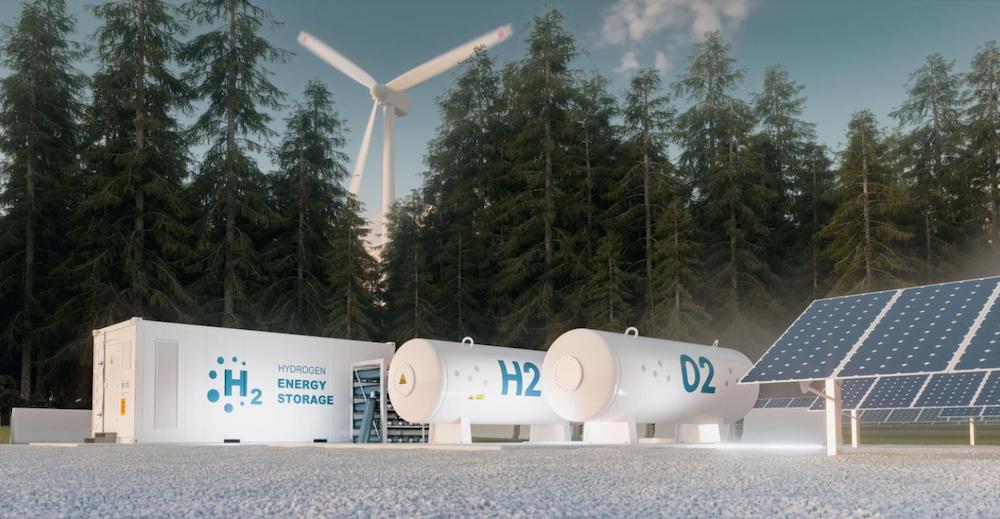Longi Green Energy Technology, a Chinese Photovoltaic Giant, Ventures into Hydrogen Energy
In 2023, China’s hydrogen energy development is gaining significant momentum. As a leading domestic provider of alkaline electrolysis hydrogen production equipment, Longi Green Energy Technology’s hydrogen subsidiary, Longi Hydrogen, has recently unveiled its next-generation ALK G-series alkaline water electrolysis hydrogen production equipment. This new product has set industry standards once again, particularly in terms of energy efficiency, productivity, and advancements in large-scale electrolysis cell technology.
Li Zhenguo, the Founder and President of Longi Green Energy Technology and Chairman of Longi Hydrogen, shared insights into the company’s hydrogen energy strategy during a recent interview following the product launch.
Li Zhenguo: “In some ways, hydrogen production is similar to solar photovoltaic (PV) generation in that it involves energy attributes, with cost being a primary consideration. One crucial cost-related metric is OPEX (operational expenditure), and the most critical factor here is electricity consumption. Therefore, we view the solid oxide route as a specialized application in certain scenarios, while AEM (Anion Exchange Membrane) technology has a slight advantage in terms of electricity consumption. However, the maturity level of various material systems is currently not high. Although Longi has consistently invested heavily in research and development in this area, we are not yet ready for mass production.”
“In terms of both ALK (alkaline water electrolysis) and PEM (Proton Exchange Membrane) technologies, alkaline water electrolysis has no disadvantage in electricity consumption. In fact, our newly released G-series products have a competitive edge in this aspect. From a CAPEX (initial investment cost) perspective, the price of one electrolysis cell in PEM technology is approximately four times that of ALK technology. This makes alkaline water electrolysis even more advantageous. Of course, Longi does not exclude any technology route. In the PEM route, including whether electrodes and catalysts can replace precious metals, we are also allocating resources and efforts to conduct research. However, under current conditions, if we are to achieve mass production, it must bring value to our customers. This is the most crucial aspect.”
Li Zhenguo: “I believe our primary competitive strengths lie in two aspects. Firstly, we have assembled a research and development team of over 100 people. We have formed deep research groups in various areas, including materials and design. This includes research into different technology routes, as mentioned earlier, and we have achieved excellent results. This includes the reduction of investment and social resource consumption when scaling up the construction of electrolysis cell facilities from 1,000 standard cubic meters to 2,000 standard cubic meters. Research and development are not a matter of having one successful idea; it requires the allocation of various resources. Currently, we have built a team with good qualities and capabilities in multiple areas.”
“Secondly, we have streamlined the supply chain system for this route. Alkaline water electrolysis is highly technically intensive, but its application scenarios and industry scale were previously too small, resulting in an incomplete supply chain system. Over the past two years, we have established a comprehensive supply chain system. For example, we have constructed large-scale electroplating equipment suitable for our products and found reliable partners to produce pressure vessels, among other initiatives. By the end of this year, we will have the capacity to produce 2.5 GW, indicating that our supply chain system is complete, and we can produce this much at any time.”
Li Zhenguo also touched on the future of green hydrogen and its potential applications: “Green hydrogen production through intermittent renewable energy sources, followed by certain storage mechanisms, is expected to be a significant application scenario for the future. However, at present, the large-scale application of green electricity itself is still in its development stage. The coupling of hydrogen usage scenarios with local policies is not yet sufficient to support large-scale applications.”
“Currently, we face several challenges. First, there are policy restrictions. For example, hydrogen production must be located within chemical industrial parks, limiting its application scenarios. Second, the carbon trading prices in the country are relatively low, hindering the realization of green hydrogen’s value. I believe the development of the green hydrogen industry is not a technological issue but rather a matter of non-technical costs such as land, taxation, funding, and, ultimately, the pace at which national policies steer the energy transition. The impact of relevant policy aspects will be more significant for the development of the green hydrogen industry.”
Li Zhenguo concluded by emphasizing Longi Hydrogen’s clear positioning: “Longi Hydrogen’s role is to provide large-scale water electrolysis hydrogen production equipment and intermittent hydrogen production solutions. Longi Green Energy Technology itself acts as a company that provides product technology and services to energy companies, rather than being an energy company. We view hydrogen energy as a crucial component of future energy transition and consider it as the second growth curve after solar photovoltaics.”

